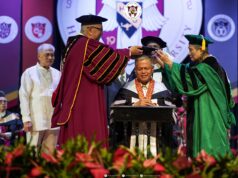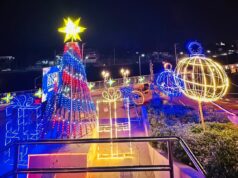Guy Hilbero, tourism officer of this town, said the President made this commitment to a group of Japanese journalists who interviewed him recently in Malacanang. Hilbero is also one of the founders of the Kamikaze Shrine at the Mabalacat West Airfield to promote Philippine-Japan friendship.
He said the Japanese government has reportedly suspended the “fourth mission” of a Japanese group tasked to collect bones purportedly of Japanese soldiers who died in the Philippines in the last World War after a group of Mangyans claimed that the bones of their ancestors are being passed off as Japanese.
“Some of these bones had already been flown to Japan and presented as skeletons of Japanese soldiers who perished in the Philippines during World War II,” Hilbero said.
The Mangyan group Pinagkausahan Hanunuo sa Daga Ginurang (Phadag) in Mindoro, has been complaining about the alleged stolen bones of its ancestors from sacred caves, he said.
Hilbero said Japanese journalists following up the issue in the Philippine informed him that the Japanese government had suspended the fourth bone-collection mission of the Japanese group collecting bones because of the Mangyan complaint.
In a complaint before the National Commission on Indigenous Peoples (NCIP),
Phadag accused a Tokyo-based non-profit organization that the Japanese government commissioned to collect Japanese soldiers’ bones in the Philippines since 2007, and the National Museum of the Philippines among others of their alleged involvement on the stealing of the bones.
Phadag president Aniw Lubag has reported that only 30 percent of the remains of their ancestors have been left.
The Phadag has a direct application with the NCIP for a certificate of ancestral domain title on 32,139.69 hectares of land covering the towns of Roxas, Mansalay and Bulalacao.
The issue of Japanese bones was first raised by “concerned Japanese citizens” last June as they identified a group called Kuentai as being engaged in the search for Japanese bones in the country.
However, Motohiko Kato, minister and deputy chief of mission of the Japanese embassy, immediately came out with a statement saying that the Japanese government is not paying for the remains of the Japanese soldiers, contrary to reports that a Tokyo based syndicate has been paying P1,000 per set of skeletons from Filipino graves.
“For the collected remains of Japanese soldiers in the Philippines, we respect the legal procedure in the Philippines,” Kato said, noting that officials from the National Museum have been actively participating in locating and identifying remains of Japanese soldiers.
Hilbero said that in an interview with Japanese journalists in Malacanang before typhoon Juan, the President said he was aware of the problem. He said that the interviewers included his friend Yoshihiko Sakai, head of the Manila Shimun.
are of the reports on the Japanese bones, he had yet to receive any formal communication from the Japanese government on the issue.
“I’m waiting for the DFA (Department of Foreign Affairs) to tell me about it,” Sakai quoted the President as saying.
Reminded of the complaint filed by the Mangyans, the President reportedly said “we are gathering all relevant information first before deciding on an appropriate course of action.”
The President was also reported to have noted that “the National Museum does not seem to be imbued with the authority necessary” to act on the controversy.
Annually, the Japanese people prepare for their annual ancestral ceremony called Bon held either in July or August which, along with the New Year’s celebration, is considered to be one of the two most important observances in Japan. During Bon ceremony, family members return to their parental homes to honor all spirits of the dead who are believed to return to their homes at that time.
Japanese people are known to remember and venerate their ancestors through purification rituals that take place from the seventh to the hundredth year anniversary of their death.




